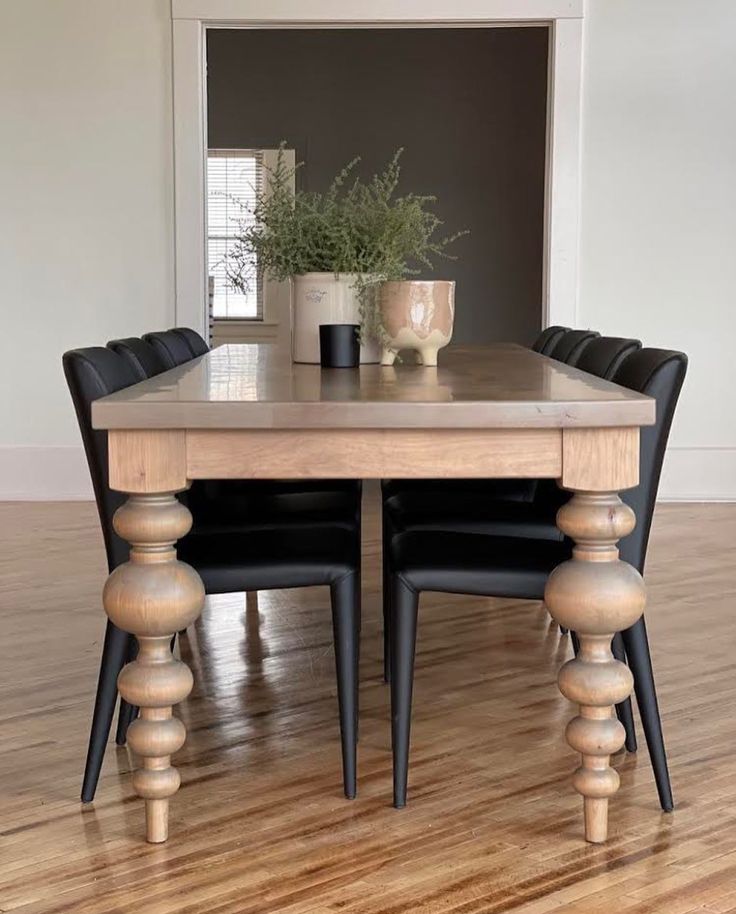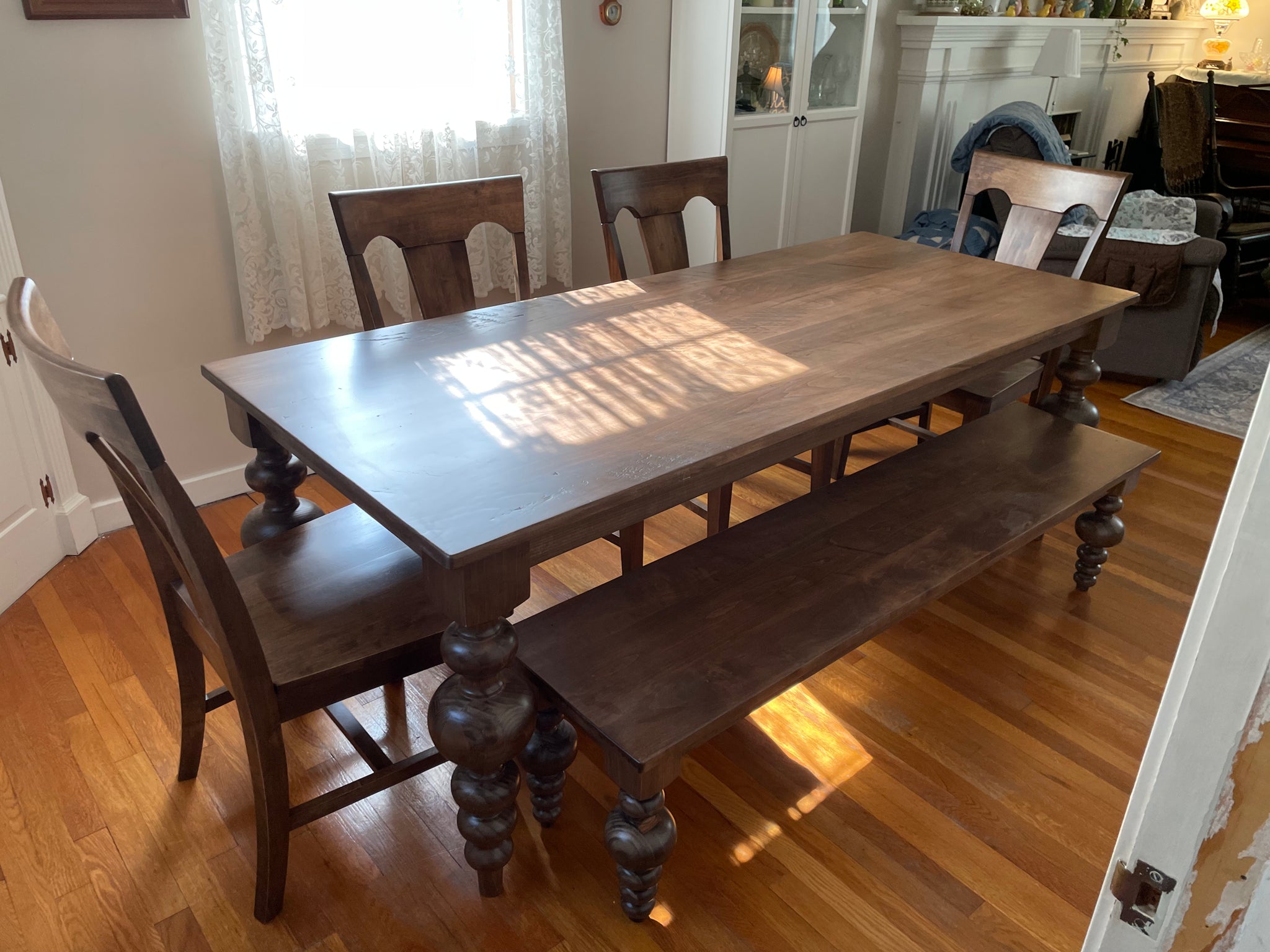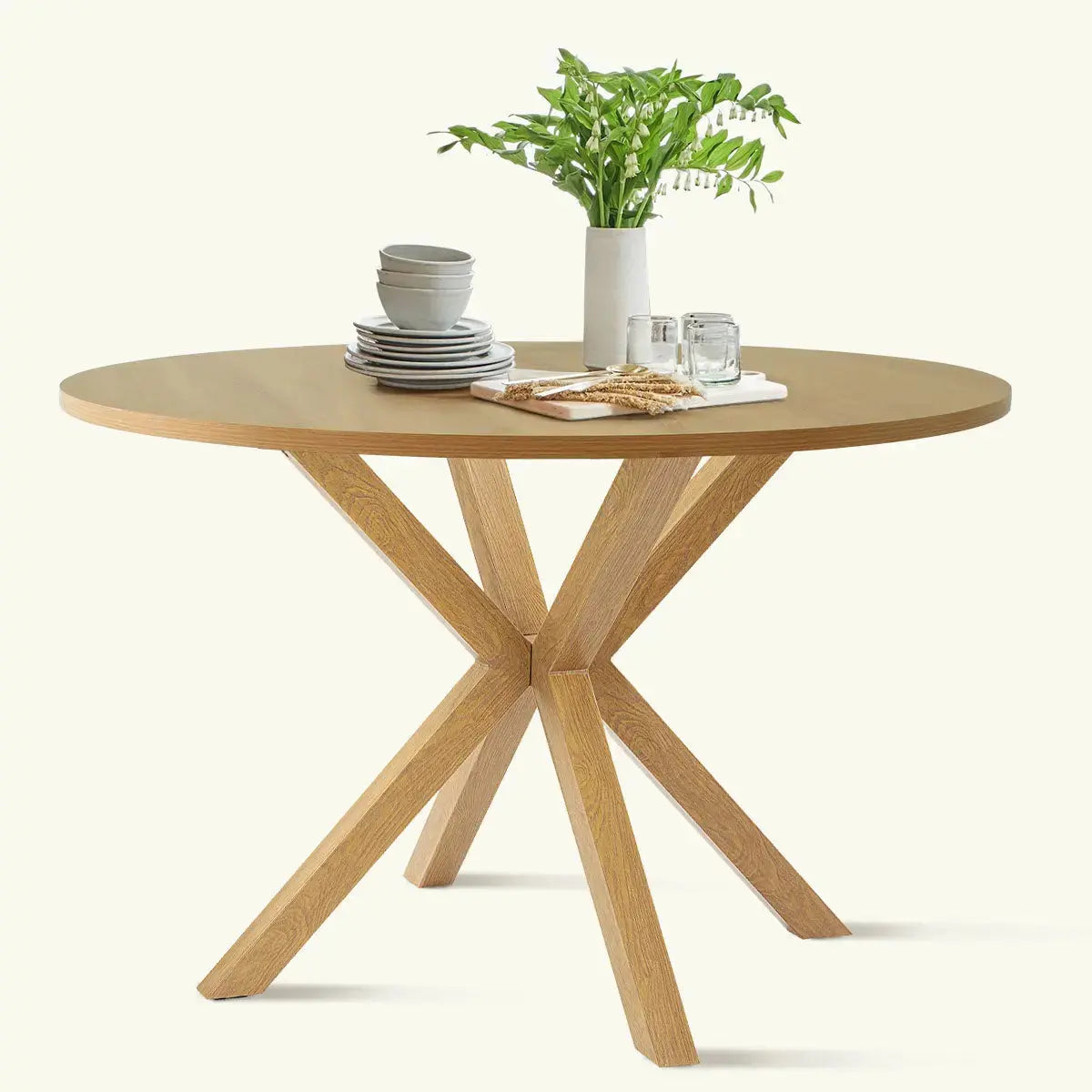Exactly How to Select the Perfect Dining-room Table Legs for Your Home Decor
Picking the suitable dining room table legs is a nuanced process that calls for cautious factor to consider of various components, including your area constraints, visual preferences, and useful needs. The interaction between measurements, designs, and products can significantly affect the atmosphere of your eating area, making it essential to approach this choice carefully. As you contemplate the myriad options available, it comes to be clear that the ideal choice prolongs past plain look; it can improve your overall eating experience. What variables should you prioritize to guarantee your choice complements your home's unique personality?
Assess Your Eating Area
Assessing your eating area is critical for selecting the right table legs that match both aesthetics and performance. Begin by gauging the measurements of your dining area, including ceiling height, floor area, and distance to various other furniture. This details will aid determine the suitable dimension and height of your table, which straight affects the choice of table legs.
Following, think about the design and layout of your dining area. An open-concept design might benefit from table legs that provide visual agility, such as slender steel or acrylic choices. Conversely, a much more conventional setup might ask for sturdy wooden legs that provide a sense of durability.
Assess the existing color palette and materials in your dining location. Balancing the table legs with these aspects produces a natural appearance that boosts the general design.
Ultimately, a thorough assessment of your eating space will certainly assist you in making a notified choice, making sure that your table legs not just enhance the aesthetic charm but likewise offer functional purposes.
Consider Your Design Preferences
When selecting dining-room table legs, it is vital to review your personal design preferences, as they significantly influence the total visual of your dining space. Your selection of table legs can either enhance or contrast with existing décor, making it important to straighten them with your preferred indoor design motif.
If your home leans in the direction of a contemporary aesthetic, consider smooth steel or minimalist wood legs that supply a clean, clean look. For a more conventional method, luxuriant wooden legs with complex carvings can include a touch of elegance and elegance. Industrial designs benefit from robust, resources such as recovered timber and metal combinations, reflecting a rugged charm.
Furthermore, farmhouse and rustic designs often favor durable, beefy legs that evoke a sense of heat and comfort. On the other hand, if your design is diverse, you could pick non-traditional shapes or a mix of products to produce visual passion.

Evaluate Product Options
The option of product for dining area table legs plays an essential role in both longevity and visual allure. Usual products consist of wood, metal, and composite choices, each offering distinct qualities that can affect the overall appearance and longevity of your table.
Timber is a classic option, understood for its heat and adaptability. Woods like oak and walnut offer phenomenal toughness and can be completed in different stains to match any kind of decor. Softwoods like ache are more prone to dents and scratches, making them less optimal for high-traffic areas.
Steel legs, usually crafted from steel or light weight aluminum, exhibit modernity and commercial beauty. They are resistant and extremely resilient to wear, making them ideal for families with youngsters or constant celebrations (dining room table legs). In addition, steel can be completed in various shades, boosting the personalization opportunities
Composite products, such as MDF or laminate, deal cost and varied layouts. While commonly much less resilient than solid timber or metal, they can still give a trendy look and are usually simple to preserve.
Ultimately, the product you pick ought to straighten with your lifestyle, aesthetic preferences, and the level of use your table will experience.
Determine Elevation and Dimension
Picking the proper height and dimension for your dining space table is essential for both capability and comfort. The basic elevation for eating tables typically varies from 28 to 30 inches, permitting ample legroom for many individuals when seated. However, it is essential to consider the dimensions of your dining area and the types of chairs you prepare to utilize.

Additionally, think about the proportions of your dining-room. A bigger table in a roomy location can develop a grand ambiance, while a smaller sized table functions well in even more intimate settings. Ultimately, the appropriate elevation and size will certainly integrate with your overall decor and improve the eating experience for you and your guests.
Explore Personalization Possibilities

Additionally, the layout of the legs can be customized to fit various styles, such as rustic, modern, or commercial. For example, conical legs can stimulate a mid-century modern feeling, while beefy, block-style legs might reverberate with traditional or farmhouse decor.
Home owners can additionally explore shade surfaces, from natural timber discolorations to repaint, enabling them to match or contrast with the tabletop and bordering style.
Moreover, leg elevation can be adapted to suit particular seating plans or individual preferences, enhancing both comfort and functionality.
Lastly, unique embellishments, such as makings or decorative braces, can further customize the table legs, making the eating experience not simply a meal yet a statement item in the home. By thinking about these personalization choices, house owners can develop a dining-room table that truly mirrors their uniqueness.
Conclusion
Selecting the suitable dining-room table legs needs careful factor to consider of various aspects, including the dimensions of the eating area, design choices, product toughness, and wanted height. Modification choices further boost the capacity to accomplish a natural visual that enhances the overall decoration. By methodically assessing these aspects, property owners can make certain that the selected table legs not only meet practical requirements yet also contribute favorably to the dining experience and atmosphere of the home.
Choosing the optimal eating room table legs is a nuanced process that calls for careful factor to consider of numerous aspects, including your space restrictions, aesthetic preferences, and useful needs.Evaluating your eating space is critical for choosing the right table legs that match both looks and capability.When figuring out size, gauge the location where the table will certainly be placed to guarantee it fits comfortably, enabling for at the very least sites 36 inches of clearance around the table for simple movement. A larger table in a sizable location can develop a grand setting, while a smaller sized table works well in more intimate settings.Picking the ideal eating area table legs needs cautious consideration of numerous elements, including the dimensions of the eating space, style preferences, material sturdiness, and wanted elevation.
 Jonathan Lipnicki Then & Now!
Jonathan Lipnicki Then & Now! Michael Bower Then & Now!
Michael Bower Then & Now! Andrea Barber Then & Now!
Andrea Barber Then & Now! Mackenzie Rosman Then & Now!
Mackenzie Rosman Then & Now! Lisa Whelchel Then & Now!
Lisa Whelchel Then & Now!